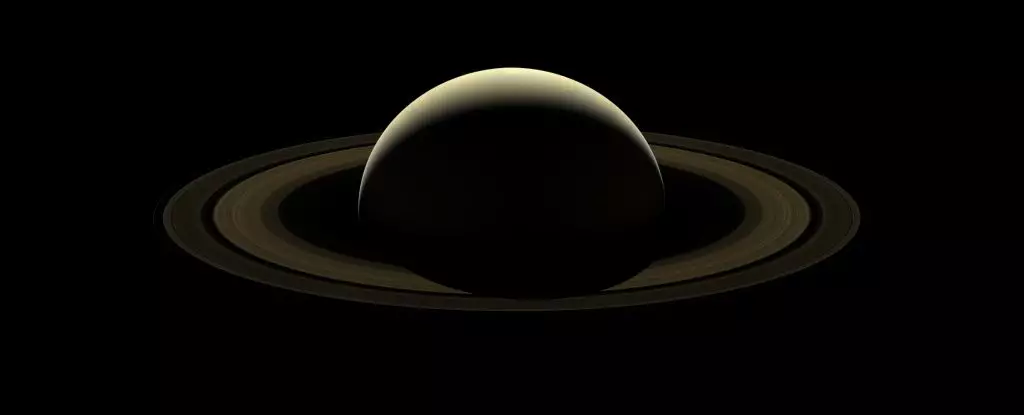Saturn, the ringed giant of our solar system, has always been a source of fascination and wonder for astronomers and scientists alike. Recent discoveries have shed new light on the planet’s climate and weather patterns, revealing a massive, seasonal energy imbalance across its globe. The findings represent a significant breakthrough in our understanding of gas giant planets and their long-term evolution.
The Sun’s Influence and Internal Energy Sources
The Sun plays a crucial role in the energy balance of planets within our solar system. The intense light and radiation emitted by the Sun provide energy to planets like Saturn. Additionally, gas giant planets have internal energy sources that contribute to their climate dynamics. These internal processes interact with external factors, creating a complex system that influences the planet’s overall energy budget.
New Insights and Paradigm Shifts
Physicist Liming Li of the University of Houston emphasized the significance of the recent discovery, stating, “This is the first time that a global energy imbalance on a seasonal scale has been observed on a gas giant.” The findings challenge existing models and theories of planetary science and atmospheric dynamics. Researchers, led by atmospheric scientist Xinyue Wang, are reevaluating their understanding of gas giants based on the observed seasonal energy imbalance on Saturn.
Saturn’s orbit is not a perfect circle; it is elliptical, leading to variations in distance from the Sun. This eccentricity results in dramatic differences in the amount of solar radiation received by Saturn throughout its orbit. The seasonal energy imbalance on Saturn is closely linked to these variations in distance and solar radiation. Unlike Earth, with its more circular orbit and relatively stable energy budget, Saturn experiences significant fluctuations in energy absorption and emission.
The discovery of Saturn’s energy imbalance could have far-reaching implications for our understanding of gas giants and their atmospheric processes. It may help explain the formation of convective storms and other phenomena observed on gas giants like Jupiter. Furthermore, the research suggests that similar energy imbalances may exist on other gas giants, such as Uranus and Neptune, shedding light on the inner workings of these enigmatic planets.
Future Investigations and Missions
Xinyue Wang highlighted the importance of continuing research to explore the implications of the energy imbalance on Saturn and its implications for other planets. The findings present opportunities for future missions to explore the atmospheric dynamics of gas giants in more detail. By formulating testable hypotheses and utilizing innovative observation techniques, scientists hope to uncover the mysteries of these distant worlds and expand our understanding of planetary science.
The discovery of Saturn’s seasonal energy imbalance represents a significant milestone in our exploration of gas giant planets and their unique characteristics. By challenging existing models and theories, scientists are paving the way for a new era of discovery and innovation in planetary science. Saturn’s mysteries continue to intrigue and inspire us as we delve deeper into the complexities of our solar system and beyond.


Leave a Reply